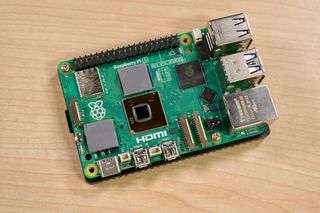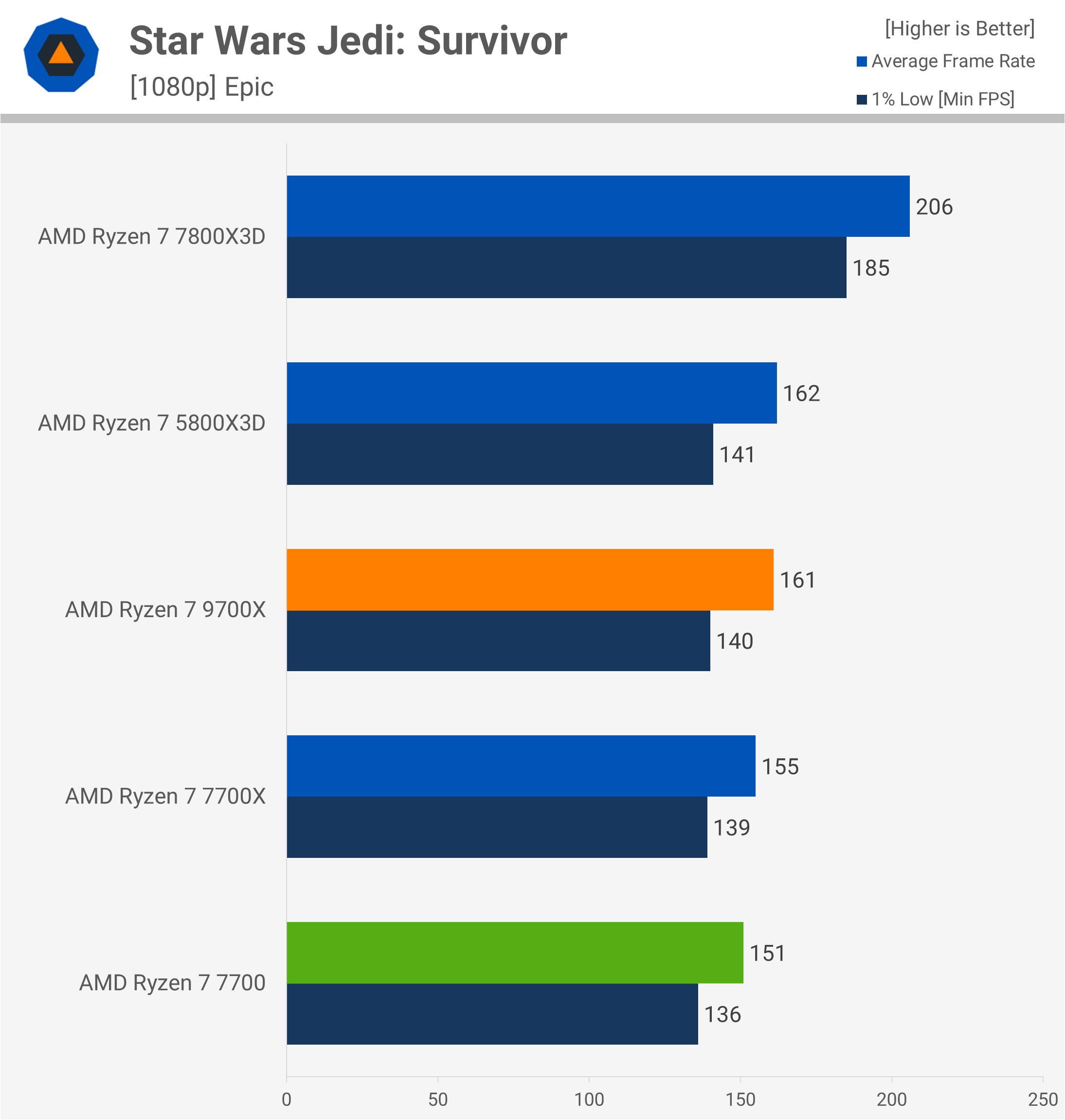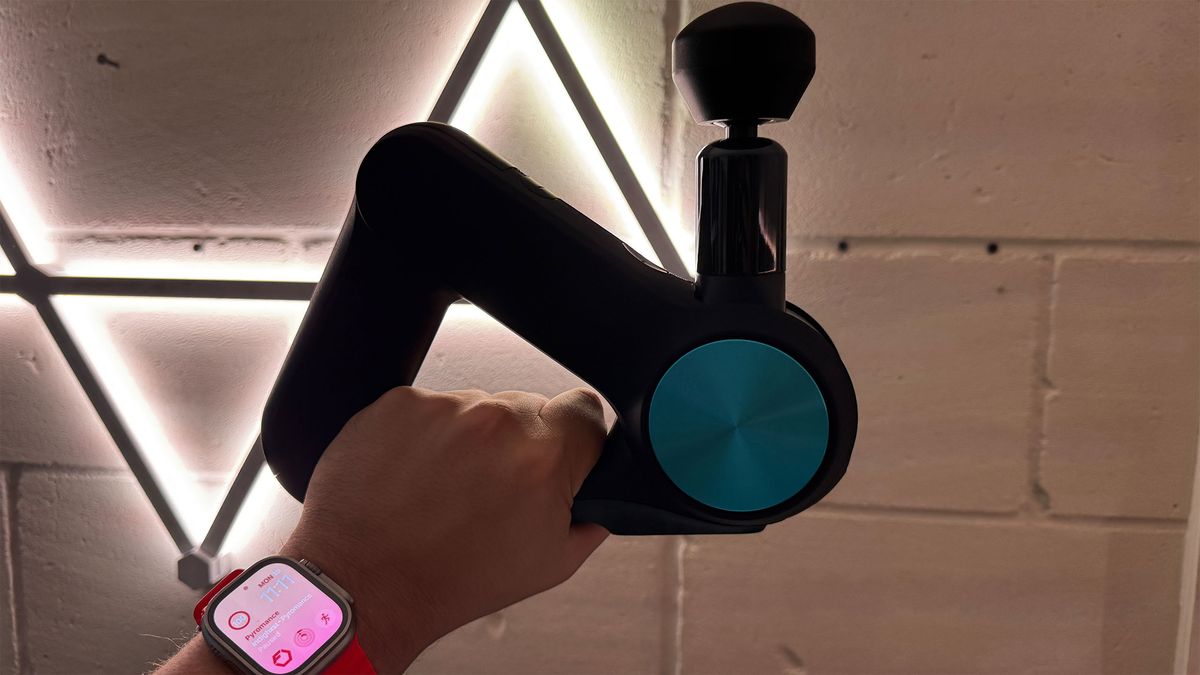Raspberry Pi expert and YouTuber Jeff Geerling, along with reverse engineer John McMaster have delidded the recently released 2GB model of the Raspberry Pi 5 and given us a glimpse into the chip structure that lies underneath the integrated heat spreader (IHS), a glimpse that includes "dark silicon" and lower power consumption.
Pi 5 2GB model is $50, has 'D0' chip stepping with 'dark silicon' (unused parts of BCM2712 chip) removed.I bought a few, and delidded one: pic.twitter.com/n1tQuyf1ghAugust 26, 2024
The Raspberry Pi 5 uses a BCM2712 SoC which features an Arm Cortex A76 64-bnit CPU. The newer 2GB model has a cost optimized version of the BCM2712, BCM2712D0, unlike older models which use the BCM2712C1. The difference between the two? During our tests of the new 2GB Pi 5, we asked Raspberry Pi co-founder and CEO Eben Upton, and he said "removes all the non-Raspberry Pi-specific logic from the chip. But from the user's perspective it's functionally identical."

Geerling went deeper into the silicon, and pulled out a few interesting points, including an area of "dark silicon", essentially the unused parts of the BCM2712 chip which have been removed. This has lead to a 33% reduction in die space
What's been removed from the D0? There is plenty of speculation as to what it could be on the Raspberry Pi Forums, but Geerling is sure that Raspberry Pi has removed the on-chip Ethernet MAC, something that the new RP1 "Southbridge" chip already provides. Geerling also seems to think that USB logic has also been removed, again with that function now being provided by the RP1.
Thermals highlight the fact the 2GB Pi 5's D0 chip consumes less power, as well—I'll have more details on my blog/YouTube later this week. https://t.co/ZLSgmi8OfR pic.twitter.com/BdbkzO8kRoAugust 27, 2024
The Raspberry Pi 5 2GB also seems to run cooler and consume less power than the higher RAM models. In a stress-ng test conducted by Geerling, the 2GB seems to be around 5-10 degrees Celsius cooler than the 4 and 8GB models. We've not got the exact data, Geerling will be releasing that later this week. A lower power consumption would see the Pi 5 2GB being the ideal board for those machines that we "forget about", like home servers and data science projects.
Could the D0 SoC make its way into the higher spec models of Raspberry Pi 5 which use the C1? We've not got any definite information, but it would make sense for Raspberry Pi to do this. It would only need to make one SoC variant, a variant that would have improved thermal performance and power consumption. We've reached out to Upton for more information and possible confirmation. We will update the story when we have the information from Upton.
Raspberry Pi 5 Technical Specifications
Swipe to scroll horizontally
| SoC | BCM2712 SoC Arm Cortex-A76 64-bit CPU running at 2.4 GHz |
| Row 1 - Cell 0 | 800 MHz VideoCore VII GPU, supporting OpenGL ES 3.1, Vulkan 1.2 |
| Display | 2 x 4Kp60 HDMI display output with HDR support |
| RAM | 1,2,4,8GB LPDDR4X-4267 SDRAM |
| Storage | Micro SD (SDR104 compatible) M.2 NVMe SSD via M.2 HAT |
| GPIO | 40 Pin Raspberry Pi HAT Compatible |
| USB | 2 x USB 2 2 x USB 3 (simultaneous 5Gbps) |
| Connectors | 2 × 4-lane MIPI camera/display transceivers PCIe 2.0 x1 interface UART breakout RTC clock power Fan power |
| Networking | Gigabit Ethernet, PoE via PoE+ HAT |
| Wi-Fi / Bluetooth | Dual-band 802.11ac, Bluetooth 5 / BLE |
| Power Button | Soft power button |
| Power | 5V 4A via USB C PoE via Poe+ HAT 5V via GPIO |
| Dimensions | 85 x 56mm |
| MSRP | 1GB $40??? 2GB $50 4GB $60 8GB $80 |

 1 month ago
14
1 month ago
14






:quality(85):upscale()/2024/10/17/848/n/1922729/9dece426671163b35dcb11.60305022_.jpg)


 English (US) ·
English (US) ·